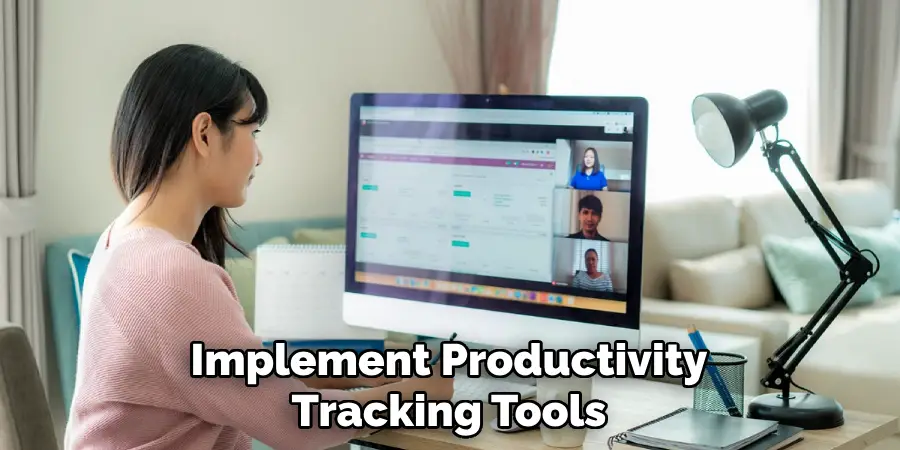In today’s increasingly remote work landscape, ensuring that employees are effectively working from home has become a top priority for many organizations. While remote work offers flexibility and convenience, it also presents challenges in terms of productivity and accountability. This article will guide you on how to make sure your employees are working from home efficiently.

From establishing clear expectations and communication channels to implementing productivity tracking tools and fostering a positive work environment, we will explore various strategies and best practices. By implementing these measures, you can promote productivity, maintain a strong work culture, and ensure that your employees remain engaged and motivated while working remotely.
Importance of Monitoring Remote Employee Work
While allowing employees to work from home provides increased flexibility and convenience, it is important to ensure that they remain productive. Monitoring remote employees’ activity can help keep them on task and ensure that the company’s goals are met.
One way to monitor productivity while working remotely is by implementing a system of tracking and reporting the tasks completed each day. This can be done by having employees fill out a daily log or time tracker detailing the hours worked and the tasks performed.
Having employees report their progress on a regular basis will give managers visibility into how much is being accomplished each day and provide insight into any areas where additional support may be needed.
It is also important to establish clear guidelines for remote work. These should include expectations for communication, including when employees should be available and how often they should be checking in with their manager. Establishing these expectations will help ensure that everyone is on the same page and that tasks are completed in a timely manner.
Finally, it’s important to provide remote workers with the right tools and resources to do their jobs effectively. This may include access to project management software, shared files, and other necessary tools. Providing remote employees with the right resources will help them remain productive and successful in their roles.
Balancing Trust and Accountability in a Remote Work Setting
When your employees are working remotely, it’s important to maintain a balance of trust and accountability. You want to ensure that they can work independently and get their tasks done, but you also need to make sure the work is being completed on time and up to standards. To do this, you’ll need to have an effective system for tracking progress and managing performance.
One way to do this is by setting clear goals for each employee so they understand what their expectations are. Make sure these goals are realistic yet challenging so that employees feel motivated without feeling overwhelmed or unmotivated.

Additionally, provide regular feedback so that employees have the opportunity to adjust their strategies in order to meet or exceed their targets. This will help them stay focused and engaged, while also ensuring that their work is meeting your expectations.
You should also set up a system for tracking employees’ progress and performance. This could include using productivity software or having regular check-ins with each employee to review accomplishments and discuss any areas of concern. By keeping track of progress, you can ensure that everyone is on the same page and working towards the same goals.
Finally, it’s important to give employees autonomy in how they manage their time and tasks. Allow them to take breaks when needed, try out different methods of completing tasks, and adjust their schedules as necessary so that they can remain productive while still feeling comfortable in their environment.
Defining Work Hours and Availability
When employees work from home, it’s important to establish expectations around work hours and availability. Make sure your team is clear on when they should be available for work, as well as how often you expect them to check in while working remotely. Establishing these guidelines will help ensure that all of the tasks that need to be completed are done in a timely manner.
It can also be beneficial to create regular schedules for each employee, so everyone knows when they can expect their colleagues to be available throughout the day.
This way, employees will know who they can contact if needed or even have small group meetings during designated times. Additionally, set up communication protocols with your team so everyone is aware of how often they need to report progress updates or contact an supervisor if they are having any issues.

Finally, be sure to provide flexibility when it comes to work hours and availability. You don’t want your employees feeling overwhelmed by their workloads or struggling to balance a job with other commitments. If you allow them the freedom and flexibility to complete their tasks in their own way, then everyone will likely be more productive and engaged.
10 Ways How to Make Sure Your Employees Are Working from Home
Establish Clear Expectations:
Clearly communicate your expectations regarding work hours, availability, and deliverables. Set specific goals and deadlines to ensure that employees understand what is expected of them while working remotely.
Encourage employees to let you know if they are having difficulty meeting a specific goal or deadline, and be available to provide support. However, also be sure to set boundaries and allow employees a reasonable amount of autonomy.
Maintain Open and Transparent Communication:
Foster open lines of communication between employees and management. Encourage regular check-ins, virtual meetings, and feedback sessions to address any concerns, provide guidance, and keep everyone informed about ongoing projects.
Make sure each employee has someone who is available to them for support. To keep communication efficient, ensure that everyone uses the same digital platform for all work-related tasks. However, remember to be flexible as some people may still prefer traditional methods of communication.
Use Productivity Tracking Tools:
Implement productivity tracking tools to monitor employee performance. These tools can track time spent on tasks, measure productivity levels, and provide insights into employee work patterns.

Ensure that these tools are used transparently and with the employees’ consent. Make sure the employees understand why they are using it and how it will benefit them. This will help ensure that everyone is on the same page, and that any potential privacy concerns are addressed.
Encourage Regular Updates:
Ask employees to provide regular updates on their progress and accomplishments. This can be in the form of daily or weekly status reports, project updates, or task management tools. Regular updates allow you to track progress and address any potential issues or roadblocks.
Furthermore, having updates available makes it easier for you to provide feedback and help employees improve their work. Make sure your employees are aware of the importance of timely updates and how it can help them stay on top of their work.
Promote Task and Project Management Tools:
Encourage the use of task and project management tools to help employees stay organized and accountable.
These tools allow for clear task assignments, progress tracking, and collaboration among team members. Popular tools include Asana, Trello, and Monday.com. They offer a range of capabilities to keep everyone in the loop on upcoming tasks and projects, as well as progress being made on them.
Provide Clear Communication Channels:
Establish clear and efficient communication channels for employees to reach out for support or clarification. This can include email, instant messaging platforms, project management tools, or video conferencing software. Encourage timely responses to maintain effective communication. Additionally, provide weekly progress updates and 1-on-1 meetings to check in on employees’ projects.
Foster a Supportive Work Environment:
Create a positive and supportive work environment by promoting employee well-being. Encourage breaks, exercise, and healthy work-life balance. Provide resources for mental health support and encourage employees to take care of their well-being while working from home.
Conduct Regular Performance Check-Ins:
Schedule regular performance check-ins to discuss progress, challenges, and development opportunities. These one-on-one meetings provide an opportunity to address concerns, provide guidance, and offer feedback to help employees improve their performance.
Additionally, use check-ins to ensure that goals are being set and met. These meetings should be held frequently to ensure that employees remain engaged and motivated while working remotely.
Recognize and Reward Achievements:
Celebrate employee achievements and milestones to boost morale and motivation. Implement recognition programs or provide public acknowledgments for outstanding work. Recognizing and rewarding employees’ efforts and accomplishments can help maintain a positive work culture and enhance productivity.

Trust and Empower Employees:
Trust your employees to work autonomously and make decisions within their roles. Provide them with the necessary resources, guidance, and support to succeed. Empowering employees fosters a sense of ownership and accountability, leading to increased productivity and job satisfaction.
Conclusion
In today’s ever-advancing workplace, making sure that employees are indeed working from home isn’t an easy task.
Establishing protocols for remote work, fostering communication between all levels of management and the employee, utilizing the latest technologies to monitor productivity – all these elements need to coalesce in order to make sure that employees are continuing to put in their full efforts while away from the office.
Hopefully, this article gave you some helpful tips about how to make sure your employees are working from home successfully, so now that you have the proper knowledge on how to get the job done, why not give it a try today?

